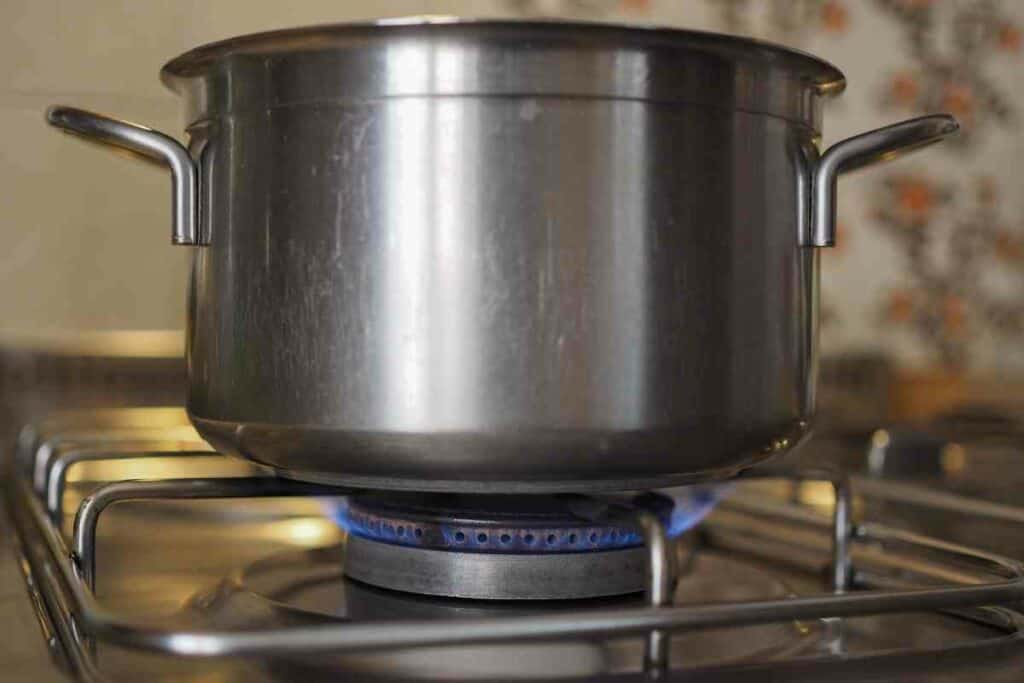Sake, Japan’s traditional drink, has a long history and particular way that it should be drunk.
Although many types of sake are now served chilled, some sake varieties are better enjoyed warm. Warming sake is a delicate process it should be heated slowly.

This is because sake goes through different processes such as fermentation and filtration in a similar way to beer and wine and is therefore delicate in its flavor.
Table of Contents
Warming Sake in The Olden Days
Way back in the old sake bars, there would be a man whose sole job was warming the sake.
Far from being a role of lower rank, the o-kan-ban (sake warmer) would often hold a position higher than that of the establishment’s manager.
The o-kan-ban would know the preferred temperatures of his regular customers and would place their tokkuri (sake carafe) in a water bath, heated to the perfect temperature.
Warming Sake Today
Since we can’t rely on the assistance of our very own o-kan-ban these days, here are four ways that you can warm sake in the comfort of your own home.
1. Using a saucepan
To heat sake in a saucepan, it would be perfect if you had a traditional carafe, a tokkuri.

There are ceramic tokkuri which are ideal for heating in saucepans as they are sturdier and thicker.
However, if a tokkuri is not within your reach, you can just put the whole bottle into your saucepan or place some sake in a tall jar or mug.
- Firstly, fill the saucepan with water until it is around half full.
- Place your tokkuri or bottle into the water to see how far up it will be covered to make sure the water is the right height. Once you’ve checked, take it back out.
- Heat the water in the saucepan on the stove. Don’t let it fully boil but wait until smaller bubbles rise to the surface of the water.
- Turn off the heat or move the saucepan to another place if the stove remains hot. Place the tokkuri or sake bottle into the saucepan.
- If you desire your sake to be heated up to hitohada-kan (around 35° Celsius or body-temperature sake), leave the container in the saucepan for two minutes.
- You can use a liquid thermometer to check the temperature of your sake if you wish. However, you can also tell the temperature by looking at it. The sake is warm when tiny bubbles reach its surface. The more often the bubbles, the higher the sake temperature.
Read also – Japanese sake sets
2. In the microwave
Warming sake in a microwave is far from ideal, but for some, it’s their only option.
Microwave warming is difficult because it is hard to monitor the exact temperature.

Microwaves often heat unevenly took and the alcohol within the sake can turn unpleasant and somewhat overbearing.
That said, if it’s a microwave or cold sake, there is a method you can use.
- Use a mug that is safe to use in the microwave and fill it with sake until it is half full.
- Microwave the mug of sake for around 30 seconds on high heat. You should adjust the temperature of the microwave if you prefer it at a different temperature.
- Once your sake has warmed, decant it into a traditional tokkuri if you have one.
- You should serve the sake straight away so that it does not lose heat or taste.
- At a push, you can put a bottle of sake with the cap off directly into the microwave! You should heat it for 30 seconds on high if you desire the hitohada-kan temperature or one minute for jyoh-kan temperature (“good hot” at 45-50°C).
3. In a slow cooker
Oddly enough, you can use a slow cooker to warm sake.

Follow these simple steps:
- Add water to your slow cooker until it is around three-quarters of the sake bottle height that you’re going to heat.
- Cover your slow cooker with a lid.
- Set the temperature to low.
- Allow the water to warm for around 30 minutes to an hour.
- Check that the temperature has reached around 40.5°C.
- Place your bottle of sake into your slow cooker water. Make sure the lid is off the bottle and that no water gets into it.
- Turn off the slow cooker and leave the sake in it for half an hour.
- Keep watch of the sake. If bubbles begin to rise, it is warm. If they rise more quickly, the sake is hot.
- Carefully remove the bottle from the water and pour and serve.
4. With an espresso machine
Last of all, many of us have an espresso machine in our kitchens.

But did you know you can warm sake with one?
- Fill the pitcher from your espresso machine with sake. To know your desired amount, you should use around 90ml per serving.
- Put water into the espresso machine’s reservoir.
- Set the machine’s temperature to low.
- Wait around 30 minutes to an hour for the water to heat to around 40.5°C.
- Open the espresso machine’s reservoir and put in your sake bottle or pitcher. Make sure no water gets into the sake bottle.
- Allow the sake to sit in the warm reservoir for around half an hour.
- Use the espresso machine’s steam wand to heat the sake further until it reaches the desired temperature. However, do not put the wand into the sake. The steam should hit the surface of the sake at an angle of around 45°.
- It’s time to serve!

Final Thoughts on How to Warm Sake in 4 Easy Ways
There are a few tips you can try to help you on your way to warming the perfect sake.
Firstly, a thermometer is a must if you want to get your temperatures precise. Did you know that there are nine specific temperatures for sake?
They have interesting names such as hinata-kan meaning “warmed in the sun” or hana-hie meaning “flower cold”.
By choosing the right sake at the right temperature, you’ll enjoy this traditional beverage all the more.
The temperature can change the feel of the sake and its flavours, so you’ll want to get it right.
Read Next
- Japanese Traditional Sweets (Wagashi): A Guide to Their Origins and Varieties
- A Taste of Japan in Every Bite – Japanese Candy & Snack Box Review
- Bubble Tea vs Boba Compared: What’s the Difference?
- Best Izakaya Foods for a Relaxed Night Out (My Top 10 Picks)
- Edo Kiriko Whiskey Glasses (Japanese Heritage in Every Pour)
- Japanese Viral Foods on Social Media (Discover the Top 10)









